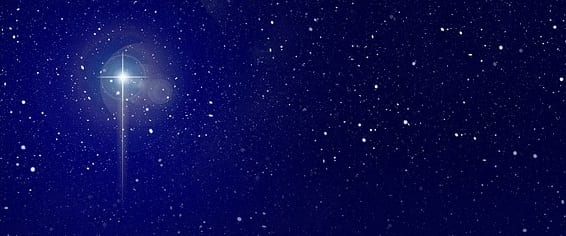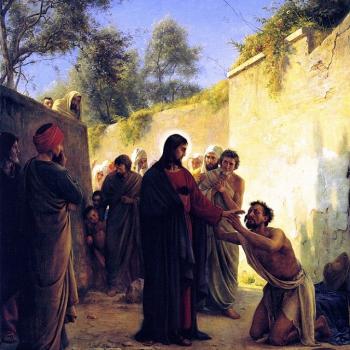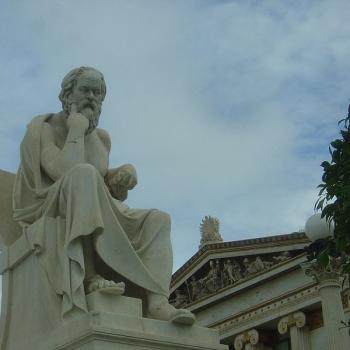Biblical View of Astronomy, Laws of Nature, and the Natural World

Atheist anti-theist Jonathan M. S. Pearce is the main writer on the blog, A Tippling Philosopher. His “About” page states: “Pearce is a philosopher, author, blogger, public speaker and teacher from Hampshire in the UK. He specialises in philosophy of religion, but likes to turn his hand to science, psychology, politics and anything involved in investigating reality.” His words will be in blue.
*****
I am replying to the following portion of Jonathan’s article, “Frank Tipler refuted on his Star of Bethlehem thesis by Aaron Adair” (8-10-12), and a related comment on another of his posts as well (all bolding added presently):
[Y]ou should consider the possibility that the Star of Bethlehem was a supernatural phenomenon. As such, it may have been visible to the Magi only – which would explain why nobody else saw it. We don’t know. But in that case, there would be nothing to prevent it from resting over a house. . . . I don’t know why Christians bother with trying to find naturalistic explanations for something so clearly supernaturalist. The Bible is full of supernaturalism – why plead this is naturalistic and then look for an incredibly ad hoc and uncorroborated naturalistic explanation! [two typos corrected]
Now, if the star is naturalistic, then the whole world could have seen it, and could have interpreted its indicative nature. Why only three or so Eastern Magi did is bizarre. That no one from Jerusalem follows the star with these people is odd. Even if the Jerusalemites were unanimously skeptical (imagine the probability of THAT!) . . . that not a single person ventured three hours south to verify or falsify the claims of the chief priests and scribes is utterly intelligible. So, really, the star must have been supernatural and only appeared to the vision of the Magi. Nothing else is particularly coherent. (12-22-14)
Jonathan has this notion in his head that the star of Bethlehem described in the Bible “must have been supernatural.” Any natural explanation is, in his opinion, “incredibly ad hoc and uncorroborated” and not “particularly coherent.”
Why he thinks this way (what presupposition — who knows what? — allegedly requires it) is anybody’s guess. Atheists have this very odd trait of always seeming to think that they know the Bible much much better than those gullible, ignorant Christians who waste their entire lives studying and being devoted to the Bible (believing to be God’s infallible revelation to mankind). In my case, I’ve done so for over 40 years: the last forty as a Christian apologist, and the last nineteen as an apologist by profession / occupation.
In any event, Jonathan magisterially and dogmatically pontificates that the explanation can only be “supernatural” and that nothing else will do, and that this is, indeed, obvious to any rational person. In fact, Christian scholars and commentators and exegetes have come down on both sides of the question, and have offered both supernatural and natural explanations. That being the case, each interpreter can only provide their own reasons for why they believe as they do, in an effort to persuade others. This is how it is for many Bible passages, that allow for differing interpretations.
I shall argue here that the natural explanation is not ruled out at all, and is quite plausible, based on the analogy of how the Bible treats natural phenomena: particularly astronomical ones. The Bible expresses an acquaintance with the stars by the ancient Hebrews:
Saturn is no less certainly represented by the star Kaiwan, adored by the reprobate Israelites in the desert (Amos 5:26) [RSV: “You shall take up Sakkuth your king, and Kaiwan your star-god, your images, which you made for yourselves;”]. The same word (interpreted to mean “steadfast”) frequently designates, in the Babylonian inscriptions, the slowest-moving planet; while Sakkuth, the divinity associated with the star by the prophet, is an alternative appellation for Ninib, who, as a Babylonian planet-god, was merged with Saturn. The ancient Syrians and Arabs, too, called Saturn Kaiwan, the corresponding terms in the Zoroastrian Bundahish being Kevan. . . . Gad and Meni (Isaias, lxv, 11 [Isaiah 65:11]) are, no doubt, the “greater and the lesser Fortune” typified throughout the East by Jupiter and Venus; Neba, the tutelary deity of Borsippa (Isaias xlvi, 1 [Isaiah 46:1]), shone in the sky as Mercury, and Nergal, transplanted from Assyria to Kutha (2 Kings 17:30), as Mars. . . .
In a striking passage the Prophet Amos (v, 8 [RSV: “He who made the Plei’ades and Orion . . .”) glorifies the Creator as “Him that made Kimah and Kesil“, . . . The word, which occurs twice in the Book of Job (ix, 9; xxxviii, 31) [9:9, RSV: “who made the Bear and Orion, the Plei’ades and the chambers of the south;” / 38:31: “Can you bind the chains of the Plei’ades, or loose the cords of Orion?”], is treated in the Septuagint version as equivalent to Pleiades. This, also, is the meaning given to it in the Talmud and throughout Syrian literature; it is supported by etymological evidences, the Hebrew term being obviously related to the Arabic root kum (accumulate), and the Assyrian kamu (to bind); while the “chains of Kimah”, referred to in the sacred text, not inaptly figure the coercive power imparting unity to a multiple object. The associated constellation Kesil is doubtless no other than our Orion. . . . We may then safely admit that Kimah and Kesil did actually designate the Pleiades and Orion. (Catholic Encyclopedia [1907], “Astronomy in the Bible”; “Astronomical allusions in the Old Testament”)
The Old Testament refers to “constellations” (RSV) four times (2 Kgs 23:5; Is 13:10; Wisdom 7:19, 29). The word in Isaiah 13:10 (“constellations” also in KJV) is the Hebrew Kesil (already noted above; Strong’s word #3685), meaning “a heavenly constellation.” It appears also in Job 9:9; 38:31, and Amos 5:8: translated as “Orion” in the KJV). 2 Kings 2:35 in the KJV renders as “planets” the Hebrew mazzaloth (Strong’s word #4208), which means “constellations, perhaps signs of the zodiac.”
Thus, we find that the ancient Hebrews (Job usually being considered the oldest book of the Old Testament), were quite aware of both planets and constellations, as natural heavenly bodies, created by God.
The Bible (KJV) refers to the “ordinances” of the heavens and the stars. The Hebrew word is chuqqah (Strong’s word #2708), meaning “something prescribed, an enactment, statute.” Just as statutes were part of Mosaic law, chuqqah as applied to the stars and astronomy referred to their natural course across the sky, or, in other words, the “statutes of nature” / laws of nature as applied to the stars in the sky, in these three passages:
Job 38:33 (RSV) Do you know the ordinances of the heavens? Can you establish their rule on the earth?
Jeremiah 31:35 Thus says the LORD, who gives the sun for light by day and the fixed order of the moon and the stars for light by night, who stirs up the sea so that its waves roar . . .
Jeremiah 33:25 Thus says the LORD: If I have not established my covenant with day and night and the ordinances of heaven and earth,
Hence, other translations have renderings like “laws of the heavens” (NIV and Goodspeed) and “rules that govern the heavens . . . laws of nature on earth” (NEB) for Job 38:33, and “fixed patterns of heaven and earth” (NASB) or “laws of heaven and earth” (NIV) for Jeremiah 33:25. The idea is clearly the laws of nature or scientific laws governing the movement of celestial bodies. The stars have “courses” (Judges 5:20). In other words, it’s a primitive way of expressing a “proto-scientific” understanding in the categories that would be comprehensible to ancient Hebrews. Even so, they came very close to the mark indeed (and of course to the Christian this suggests a divine guiding hand in the authors).
Job 38:32 . . . can you guide the Bear with its children? (cf. 9:9 noted and cited above)
The reference is to the constellation Arcturus, or Ursa Major, in the northern sky. The “sons” referred to are the stars that accompany it, probably the stars that are now called the “tail of the bear.” (Albert Barnes’ Notes on the Whole Bible)
Most people in America know these stars by another name:
The Big Dipper (US, Canada) or the Plough (UK, Ireland) is a large asterism consisting of seven bright stars of the constellation Ursa Major; . . . Four define a “bowl” or “body” and three define a “handle” or “head”. It is recognized as a distinct grouping in many cultures. . . .
The constellation of Ursa Major (Latin: Greater Bear) has been seen as a bear, a wagon, or a ladle. (Wikipedia: “Big Dipper”)
The Bible — very clearly, and in the opinion of most commentators — refers to both solar and lunar eclipses:
Isaiah 13:10 . . . the sun will be dark at its rising and the moon will not shed its light.
Joel 2:10 . . . The sun and the moon are darkened, . . .
Joel 2:31 The sun shall be turned to darkness, and the moon to blood, . . . (cf. Acts 2:19-20)
Amos 8:9 . . . I will make the sun go down at noon, and darken the earth in broad daylight.
Revelation 6:12 . . . the sun became black as sackcloth, the full moon became like blood
The ancient Hebrews, like the ancient Greeks, noted the phenomenon of the “morning star”:
Such a first appearance of a star was termed by the Greek astronomers its “heliacal” rising, and the mention in Scripture of “morning stars,” or “stars of the twilight” (Job 38:7; 3:9), shows that the Hebrews like the Greeks were familiar with this feature of the ordinances of heaven, and noted the progress of the year by observation of the apparent changes of the celestial host. One star would herald the beginning of spring, another the coming of winter; the time to plow, the time to sow, the time of the rains would all be indicated by successive “morning stars” as they appeared. (International Standard Bible Encyclopedia, 1915, “Astronomy, I”)
St. Augustine in the 5th century and St. Thomas Aquinas in the 13th, both rejected astrology long before modern science, while even the most prominent modern scientists in the 16th-17th centuries, such as Galileo, Tycho Brahe, and Kepler firmly believed in it.
The above shall suffice as a crash course in biblical astronomy. For related papers on the Bible and science, see:
Biblical Flat Earth (?) Cosmology: Dialogue w Atheist (vs. Matthew Green) [9-11-06]
Flat Earth: Biblical Teaching? (vs. Ed Babinski) [9-17-06]
Demonic Possession or Epilepsy? (Bible & Science) [2015]
Old Earth, Flood Geology, Local Flood, & Uniformitarianism (vs. Kevin Rice) [5-25-04; many defunct links removed and new ones added: 5-10-17]
Seidensticker Folly #21: Atheist “Bible Science” Absurdities [9-25-18]
Seidensticker Folly #23: Atheist “Bible Science” Inanities, Pt. 2 [10-2-18]
Loftus Atheist Error #9: Bible Espouses Mythical Animals? [9-10-19]
Seidensticker Folly #42: Creation “Ex Nihilo” [8-28-20]
“Quantum Entanglement” & the “Upholding” Power of God [10-20-20]
Seidensticker Folly #59: Medieval Hospitals & Medicine [11-3-20]
I’d like to highlight two additional areas where the Bible and the ancient Hebrew worldview was quite empirical and practical, rather than prone to quick supernatural, non-scientific, or so-called “snake oil” explanations.
Hippocrates, the pagan Greek “father of medicine” didn’t understand the causes of contagious disease. Nor did medical science until the 19th century. But the hygienic principles that would have prevented the spread of such diseases were in the Bible: in the Laws of Moses. The Bible Ask site has an article, “Did the Bible teach the germs theory?” (5-30-16):
The Bible writers did not write a medical textbook. However, there are numerous rules for sanitation, quarantine, and other medical procedures (found in the first 5 book of the OT) . . . Ignaz Philipp Semmelweis (1818 –1865), who was a Hungarian physician, . . . proposed the practice of washing hands with chlorinated lime solutions in 1847 . . . He published a book of his findings in Etiology, Concept and Prophylaxis of Childbed Fever. Despite various publications of his successful results, Semmelweis’s suggestions were not accepted by the medical community of his time.
Why was Semmelweis research rejected? Because germs were virtually a foreign concept for the Europeans in the middle-19th-century. . . .
Had the medical community paid attention to God’s instructions that were given 3000 years before, many lives would have been saved. The Lord gave the Israelites hygienic principles against the contamination of germs and taught the necessity to quarantine the sick (Numbers 19:11-12). And the book of Leviticus lists a host of diseases and ways where a person would come in contact with germs (Leviticus 13:46).
Germs were no new discovery in 1847. And for this fact, Roderick McGrew testified in the Encyclopedia of Medical History: “The idea of contagion was foreign to the classic medical tradition and found no place in the voluminous Hippocratic writings. The Old Testament, however, is a rich source for contagionist sentiment, especially in regard to leprosy and venereal disease” (1985, pp. 77-78).
Some other interesting facts regarding the Bible and germ theory:
1. The Bible contained instructions for the Israelites to wash their bodies and clothes in running water if they had a discharge, came in contact with someone else’s discharge, or had touched a dead body. They were also instructed about objects that had come into contact with dead things, and about purifying items with an unknown history with either fire or running water. They were also taught to bury human waste outside the camp, and to burn animal waste (Num 19:3-22;Lev. 11:1-47; 15:1-33;Deut 23:12).
2. Leviticus 13 and 14 mention leprosy on walls and on garments. Leprosy is a bacterial disease, and can survive for three weeks or longer apart from the human body. Thus, God commanded that the garments of leprosy victims should be burned (Lev 13:52).
3. It was not until 1873 that leprosy was shown to be an infectious disease rather than hereditary. Of course, the laws of Moses already were aware of that (Lev 13, 14, 22; Num 19:20). It contains instructions about quarantine and about quarantined persons needing to thoroughly shave and wash. Priests who cared for them also were instructed to change their clothes and wash thoroughly. The Israelites were the only culture to practice quarantine until the 19th century, when medical advances discovered the biblical medical principles and practices.
4. Hippocrates, the pagan Greek “father of medicine” (born 460 BC) didn’t understand the causes of contagious disease. He thought it was “bad air” from swampy areas. (See also: “Old Testament Laws About Infectious Diseases”)
Moreover, since Jesus observed Mosaic Law, including ritual washings, etc., He tacitly accepted (by His example of following it) the aspects of it that anticipated and “understood” germ theory. The knowledge was already in existence.
The entry on “Health” in Baker’s Evangelical Dictionary of Biblical Theology reveals that ordinary medicinal remedies (my second topic) were widely practiced in Bible times. There wasn’t solely a belief that sin or demons caused all disease. There was also a natural cause-and-effect understanding:
Ordinary means of healing were of most diverse kinds. Balm ( Gen 37:25 ) is thought to have been an aromatic resin (or juice) with healing properties; oil was the universal emollient ( Isa 1:6 ), and was sometimes used for wounds with cleansing wine ( Luke 10:34 ). Isaiah recommended a fig poultice for a boil ( 38:21 ); healing springs and saliva were thought effectual ( Mark 8:23 ; John 5 ; 9:6-7 ). Medicine is mentioned ( Prov 17:22 ) and defended as “sensible” ( Sirach 38:4). Wine mixed with myrrh was considered sedative ( Mark 15:23 ); mint, dill, and cummin assisted digestion ( Matt 23:23 ); other herbs were recommended for particular disorders. Most food rules had both ritual and dietary purposes, while raisins, pomegranates, milk, and honey were believed to assist restoration. . . .
Luke’s constant care of Paul reminds us that nonmiraculous means of healing were not neglected in that apostolic circle. Wine is recommended for Timothy’s weak stomach, eye-salve for the Thyatiran church’s blindness (metaphorical, but significant).
Doctors today often note how the patient’s disposition and attitude has a strong effect on his health or recovery. The mind definitely influences the body. Solomon understood this in several of his Proverbs: written around 950 BC (Prov 14:30; 15:30; 16:24; 17:22).
Now, all of the above is an elaborate “presuppositional background” to the issue and topic I brought up at the beginning: atheist “biblical expert” Jonathan Pearce’s insistence that the explanation for the star of Bethlehem only makes sense in a biblical context if it is supernatural and not natural. The above suggests quite otherwise: especially the data about biblical astronomy.
I would say that the overwhelming likelihood, given all this related, relevant evidence, is that biblical references (based on sheer volume) to stars and particularly the star of Bethlehem are very likely to be to natural phenomena. With that in mind, let’s briefly examine the narrative about the star of Bethlehem:
Matthew 2:2 . . . we have seen his star in the East . . .
There is nothing at all here that demands a supernatural-only explanation or interpretation of this “star.” It’s all the more unlikely in light of the fact that we know that the Magi (wise men) were highly trained in astronomy and/or some variant of astrology (likely not the “horoscope” nonsense of today). They were not likely to immediately jump to a “supernatural / miraculous” explanation. It simply meant that they interpreted it as having something to do with a king and Jerusalem, — as I have explained in other papers –, based on the symbolism of constellations and individual stars (Jupiter being the “king planet” etc.).
The text doesn’t claim that they followed this star the entire way. That’s merely the artistic license of Christmas cards. I have argued that they simply determined that it was a sign that they should journey west in search of a very noteworthy newborn king. The significant city due west of them in northwest Persia was Jerusalem. They then followed well-established, ancient routes around the desert to get there.
Matthew 2:9 . . . the star which they had seen in the East went before them, till it came to rest over the place where the child was.
This passage refers only to the six-mile journey between Jerusalem and Bethlehem, and I have contended that all it means is that a bright star (I believe, Jupiter, in my scenario, backed up by astronomical charts of what was in the sky and where) was at the time in the direction of Bethlehem (that is, over it) from Jerusalem. It would not have “moved” in the perception of the wise men, over a journey of six miles, just as we could say we were traveling west, following the setting sun. It would always “go before us” as we traveled.
It’s phenomenological language, which is habitually used by Bible writers. We use it even to this day by referring to the “sun rising” or “sun going down” etc. Literally (as we understand) it is the earth rotating, thus making the sun appear to move. But we still refer to it in the non-literal way. So does the Bible, about a lot of things.
The other aspect is the clause “it came to rest over the place where the child was.” First of all, the text does not say that this means it shone specifically onto a “house.” Matthew 2:11 (i.e., two verses later) simply says they went “into a house”: not that the star was shining on it, identifying it. We have to get it straight: what exactly any given text under consideration actually asserts and does not assert.
Let’s examine the actual biblical text a little more closely. The Greek “adverb of place” in Matthew 2:9 is hou (Strong’s word #3757). In RSV hou is translated by “the place where” (in KJV, simply “where”). It applies to a wide range of meanings beyond something as specific as a house. In other passages in RSV it refers to a mountain (Mt 28:16), Nazareth (Lk 4:16), a village (Lk 24:28), the land of Midian (Acts 7:29), Puteoli (Pozzuoli): a sizeable city in Italy (Acts 28:14), and the vast wilderness that Moses and the Hebrews traveled through (Heb 3:9). Thus it can easily, plausibly refer to “Bethlehem” in Matthew 2:9.
In RSV (Mt 2:9), hou is translated by the italicized words: “it came to rest over the place where the child was.” So the question is: what does it mean by “place” in this instance? What is the star said to be “over”? And then I noted other uses of the same word, which referred to a variety of larger areas. The text does not specifically say that “it stood over a house.” Yet many atheists (and many able and sincere, but in my opinion mistaken, Christian commentators) seem to think it does.
This is an important point because it goes to the issue of supernatural or natural. A “star” (whatever it is) shining a beam down on one house would be (I agree) supernatural; not any kind of “star” we know of in the natural world. But a star shining on an area; in the direction of an area (which a bright Jupiter was to Bethlehem in my scenario: at 68 degrees in the sky) can be a perfectly natural event.
Matthew 2:9 is similar to how we say in English: “where I was, I could see the conjunction very well.” “Where” obviously refers to a place. And one’s place is many things simultaneously. Thus, when I saw the “star of Bethlehem”-like conjunction in December [2020], I was in a field, near my house (in my neighborhood), in my town (Tecumseh), in my county (Lenawee), in my state (Michigan), and in my country (United States). This is my point about “place” in Matthew 2:9. It can mean larger areas, beyond just “house.” If the text doesn’t say specifically, “the star shone on the house” then we can’t say for sure that this is what the text meant.
I never claimed that hou was a “noun” in my original wording. I was noting that it was referring to place: as indeed it did in Matthew 2:9, since the translation of it in RSV is “the place where.” Therefore “place” is a translation of hou in this instance.
I have found 18 other English Bible translations of Matthew 2:9 that also have “the place where” (Weymouth, Moffatt, Confraternity, Knox, NEB, REB, NRSV, Lamsa, Amplified, Phillips, TEV, NIV, Jerusalem, Williams, Beck, NAB, Kleist & Lilly, and Goodspeed). In all these cases, they are translating hou: literally meaning “where” but at the same time implying place (which is the “where” referred to). The Living Bible (a very modern paraphrase) has “standing over Bethlehem”: which of course, bolsters my argument as well (because it didn’t say “house”).
All these things being understood, all the text in question plausibly meant is that the bright star was shining down on Bethlehem, just as we have all seen the moon or some bright star shining on a mountain in the distance or tall building or some other landmark. A man might see the light from the harvest moon romantically shining on his girlfriend or wife’s face. It need not necessarily mean that this is all they are shining on. It simply looks that way from our particular vantage-point.
All of this is in my opinion, more plausible and straightforward and in line with biblical thinking than positing a supernatural “star.” It’s true that many reputable and observant Christian biblical commentators exist who do argue for that interpretation, and I don’t disparage them. Theirs are honest efforts just as this paper is. Reasonable people can and do disagree. I can only present the reasons for why I hold to my opinion, and for why Jonathan’s assertions of a necessary or exclusively plausible supernatural nature of the star of Bethlehem are less reasonable and likely than my scenario. I have argued it in detail in the following papers:
Star of Bethlehem, Astronomy, Wise Men, & Josephus (Amazing Astronomically Verified Data in Relation to the Journey of the Wise Men & Jesus’ Birth & Infancy) [12-14-20]
Star of Bethlehem: Refuting Silly Atheist Objections [12-26-20]
Route Taken by the Magi: Educated Guess [12-28-20]
Star of Bethlehem: More Silly Atheist “Objections” [12-29-20]
Star of Bethlehem: Natural or Supernatural? [1-13-21]
Bible Commentaries & Matthew 2:9 (Star of Bethlehem) [1-13-21]
***
Photo credit: mskathrynne (9-14-18) [Pixabay / Pixabay License]
***












